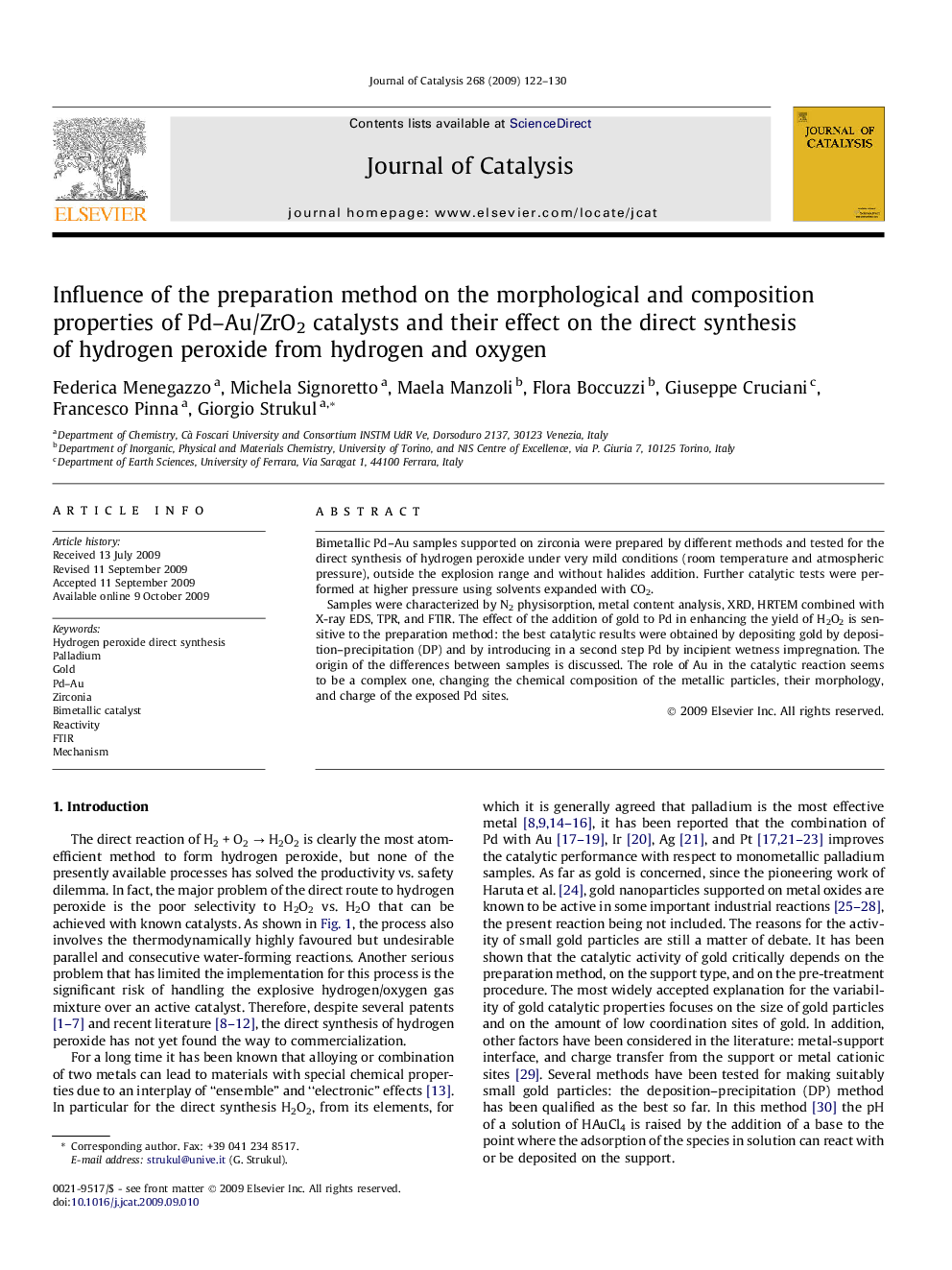| Article ID | Journal | Published Year | Pages | File Type |
|---|---|---|---|---|
| 62499 | Journal of Catalysis | 2009 | 9 Pages |
Bimetallic Pd–Au samples supported on zirconia were prepared by different methods and tested for the direct synthesis of hydrogen peroxide under very mild conditions (room temperature and atmospheric pressure), outside the explosion range and without halides addition. Further catalytic tests were performed at higher pressure using solvents expanded with CO2.Samples were characterized by N2 physisorption, metal content analysis, XRD, HRTEM combined with X-ray EDS, TPR, and FTIR. The effect of the addition of gold to Pd in enhancing the yield of H2O2 is sensitive to the preparation method: the best catalytic results were obtained by depositing gold by deposition–precipitation (DP) and by introducing in a second step Pd by incipient wetness impregnation. The origin of the differences between samples is discussed. The role of Au in the catalytic reaction seems to be a complex one, changing the chemical composition of the metallic particles, their morphology, and charge of the exposed Pd sites.
Graphical abstractThe preparation method of Pd–Au/zirconia catalysts strongly influences H2O2 direct synthesis. Au changes the chemical composition of the metallic particles, their morphology, and charge of the exposed Pd sites.Figure optionsDownload full-size imageDownload high-quality image (84 K)Download as PowerPoint slide
